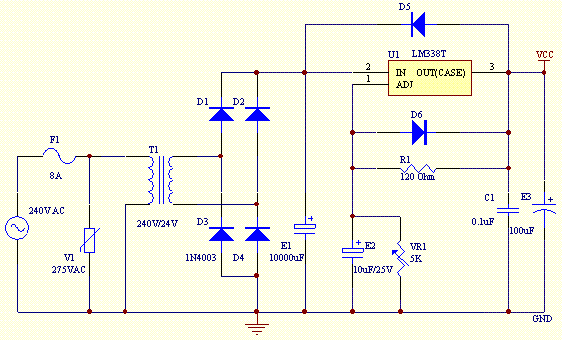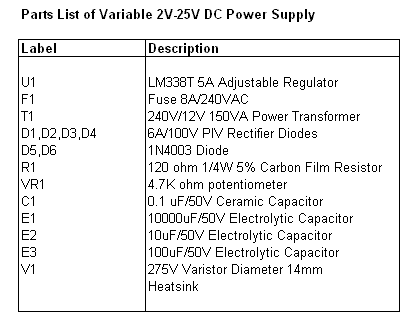A Servo Motor is a small device that has an output shaft which can be positioned to specific angular positions by sending the servo a Pulse Coded Modulation signal. As the coded signal changes, the angular position of the shaft changes. DC servo motors are used in radio controlled airplanes, radio controlled cars, robots and a host of other applications that one can think of. A picture of a servo motor is as shown below.

Though the servo is small in size, it has a printed circuit board with control circuit built in and a standard servo manufactured by Futaba is model S3003. The power consumed is proportional to the mechanical load, thus saving energy when it is used in a varying type of load. The servo motor consist of a motor, gears and its casing. Three wires are used to interface to other control circuitry which are +5V DC, Ground and Control Signal.
It is using a control called proportional control of which the amount of power applied to the motor is proportional to the distance it needs to travel. This means that if the shaft needs to turn a large distance, the motor will run at higher speed. Usually a servo is used to control an angular motion of between 0 and 180 degrees.
The servo expects to see a pulse every 20 milliseconds (.02 seconds). The length of the pulse will determine how far the motor turns. A 1.5 millisecond pulse, for example, will make the motor turn to the 90 degree position (often called the neutral position). If the pulse is shorter than 1.5 ms, then the motor will turn the shaft to closer to 0 degress. If the pulse is longer than 1.5ms, the shaft turns closer to 180 degress.
DC Servo Motor Driver Circuit Description
The input signals are between 0 - 5V delivered by connecting up the 10K potentiometers as voltage dividers. The Microchip PIC 16C71 has an AD converter that changes the voltage signal into the Pulse Code Modulation system used by the servo motors. This signal is a 5V pulse between 1 and 2 msec long repeated 50 times per second. The width of the pulse determines the position of the server. Most servos will move to the center of their travel when they receive a 1.5msec pulse. One extreme of motion generally equates to a pulse width of 1.0msec; the other extreme to 2.0msec with a smooth variation throughout the range, and neutral at 1.5msec.
It will be a good experience to experiment the control of servo motors in this project by doing your own software programming using PIC 16C71 microcontroller.

http://www.electronics-project-design.com/DCservoMotor.html












